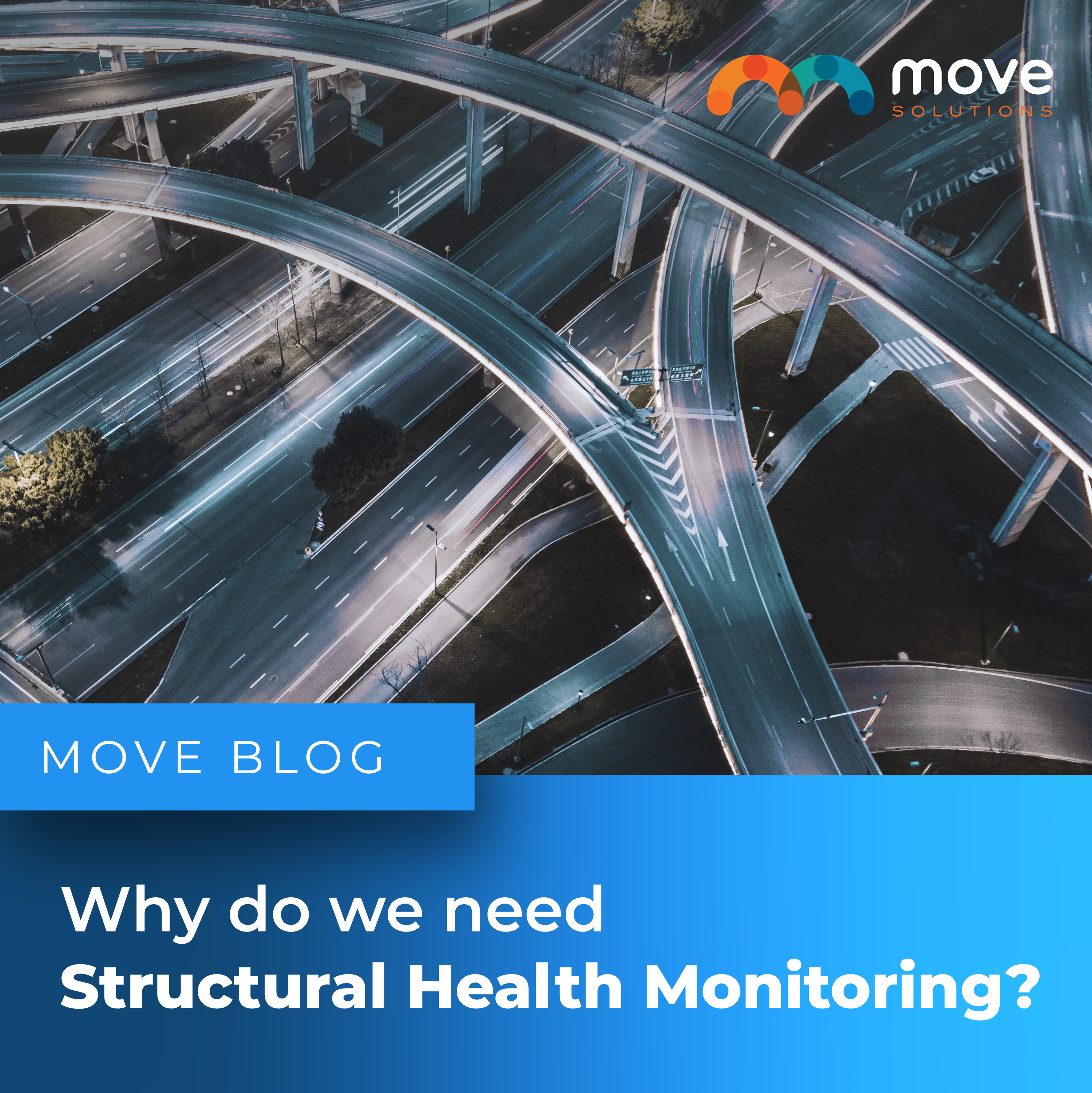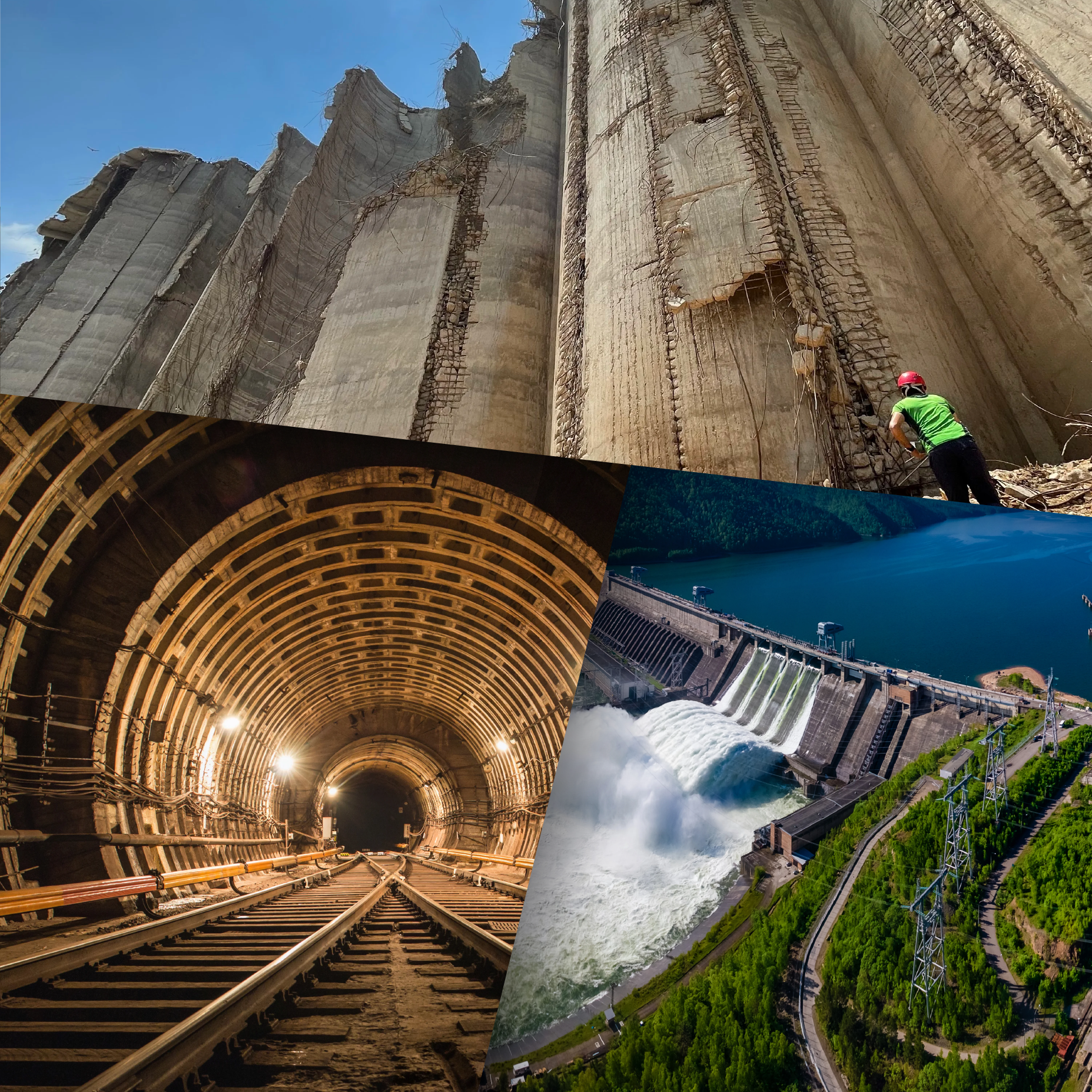Why do we need Structural Health Monitoring?
April 2022
Infrastructures are like our body: they need regular checkups.
As we grow old, our body changes: bones become more fragile, skin is less supple, hair falls out. We become weaker. The same happens with infrastructures: their structural components, like our bones, deteriorate over time and that has an impact on the strength and performance of the building.
We do not wait until we cannot move anymore before going to the doctor, do we? Instead, we do regular tests (or, at least, we should), to check that everything is ok. That helps detect problems in time and find the right treatment before it is too late.
Determining the condition of a structure
Infrastructures should be treated the same way. In order to check their performance, they must be monitored regularly. Structural Health Monitoring (SHM) is the process of determining the condition of a structure to identify variations in its response to stress or to other factors.

By assessing the present condition of the structure and planning the type of maintenance needed, regular monitoring helps improve the service life. Countries depend on infrastructures like bridges, railways and roads, and their structural failure can cause great damage in terms of serviceability, economical costs and human lives.
Material degradation
Like we do not know (yet) the secret for immortality, we also do not know materials stay the same over time. Most structures are built with concrete, steel, stone masonry and materials that become more fragile as time passes. Material degradation is a key issue in structural monitoring, as it has a great impact on the solidity of the structure. Reinforced concrete structures, for example, are affected by the corrosion of reinforcing steel caused by the chlorides ion ingress in concrete; concrete deterioration is caused by carbonation induced corrosion, alkali-silica reaction, freeze-thaw attack, and internal and external chemical attack; steel can suffer fatigue due to loads or frequent vibrations.
SHM is great: why don’t we all use it?
SHM systems are a step forward towards proactive maintenance. In fact, most current maintenance protocols are based on reactive strategy; that means that interventions and repairs are performed when failure has already occured. That can not only be a more expensive option for the structure owner, but it can also be more dangerous for everyone. The repair solutions done at that stage are also usually not as effective, increasing the risk of another failure.
Overall, SHM is an important tool that helps:
- detect problems at an early stage
- enable a proactive response
- design cost-effective solutions
- optimize maintenance process
- avoid breakdowns
- boost the structure lifetime
- improve safety
- save lives.
So, why is structural health monitoring not always implemented? The truth is that traditional SHM also comes with some issues that have limited its use in real engineering practice.
- Cost: all traditional SHM solutions are quite expensive.
- Sensors: many maintenance managers are confused about what are the right sensors required for their structural monitoring
- Complex installation: most existing SHM solutions still rely on wired systems that make installation labor-intensive, time consuming, and expensive.
- Data interpretation: SHM sensors collect a large amount of data in real time. That makes it quite challenging to understand the information received and use it for decision making.
Don’t worry, be happy.
The good news is that all those problems can be easily avoided thanks to recent advancements in technology and to the development of Internet of Things (IoT) devices. SHM systems can now be:
- cost-effective
- wireless
- easy to install
- easy to read thanks to data processing platforms
- connected to a cloud platform that gives access to your data remotely
These new technologies are disrupting old-fashioned structural monitoring.









